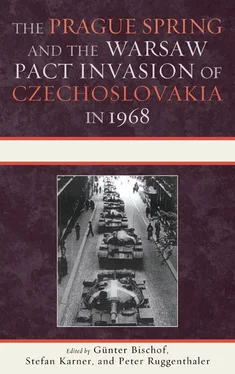While accepting Europe as a genuine third force between the two superpowers, Eurocommunism never truly coalesced with the forces of social democracy. The PCI’s contacts with Brandt or Olav Palme were confined to issues of nuclear proliferation and aid policies for the southern hemisphere. Berlinguer’s strategy consisted of finding a legitimate insertion in Western democracy, while remaining an ideological bridge between East and West. It was a tough balancing act that would have required truly overcoming the Cold War. The “Europeanization” of the PCI, it has been noted, was “never a choice of civilization.” It was a “ Westpolitik ,” as PCI intellectual Sergio Segre put it in 1974. It was focused on détente rather than pluralism and democracy. This focus on international matters was chosen in order to keep the more orthodox PCF and the more radical Communist Party of Spain ( Partido Comunista de España or PCE) tied to the project. In part it also stemmed from the fear of alienating the Soviet Union with a radical departure from democratic centralism. 60
Actually, the French Communists became more antiestablishment than their Italian counterparts with regard to détente. They espoused, earlier than the PCI, the campaign for human rights in the East. A series of articles in the party’s newspaper L’Humanité in October 1975 condemned the incarceration of high profile dissenters, mathematician Leonid Plyushch above all. But this criticism was still based on the belief that Soviet repression was merely a remnant of Stalinist distortions of socialism and national security. That’s why a notable exception was the more thoroughly dissenting Aleksandr Solzhenitsyn: against his Gulag Archipelago the PCF mounted a virulent campaign. 61In the following years, the attacks against the Soviets’ shabby human rights record and against totalitarianism of all colors came not only from the militant group of the New Philosophers led by Bernard Henri-Levy and the reviews Les Nouvelles Littéraires and Le Nouvel Observateur ; former Communists, such as Jean-Marie Domenach, Pierre Daix, and Paul Vercors echoed those voices and denounced orthodox Marxism as scholastic. 62But the French Communists continued to oppose détente as the validation of the status quo in the West, resenting its mitigating effect on their anti-U.S. campaigns. 63In the final analysis, Eurocommunism for the PCF was a mere temporary expedient and even less of a choice of civilization than for the PCI.
The main question for both the Italian and the French Communists, in light of the protest movements in the East and the West, was whether it was possible to build a European identity outside the two superpowers. The mass movements from both sides and their stress on participatory democracy made this impossible. They made it impossible to break loose from the influence of U.S. mass culture, not from the extreme Left that had apparently commanded the rebellions of the late 1960s.
The impact of the events in Prague in August 1968 on the French and Italian Communists cannot be fully comprehended without including the events of Paris in May 1968. French intellectual and student activist Régis Debray ten years later quipped, “The French path to America passed through May ’68.” While much of the youth movement rebelled against the materialism and consumerism of the U.S. way of life, it also followed trends and a redefinition of oppression based on the ethical, individualistic modes of American radicalism rather than the Marxist script or the “French-style revolutionary sensibility.” 64Much has been said about the Italian and especially the French Communists’ ineptitude in absorbing these movements. Suffice here to underline how their dilemmas between establishment and antiestablishment broadly affected their reactions to the Prague Spring.
The pressures of the antiestablishment from both sides of Europe ultimately undermined the ideological tension that the two parties formulated in strictly Cold War terms. As U.S. deputy assistant secretary of state for European affairs George Springsteen observed to French conservative leader Raymond Barré, the generation gap in Eastern Europe meant that the youth were not interested in ideology. In the West, the two concurred, all the revolutionary romanticism sounded like a triumph of ideology and like a “virus” causing contagion from France to the rest of Europe, but, in fact, if “no system of spiritual, political and social values [was] immune,” then it meant that the post–World War II generations had no reference at all, or even that their “real problems [could] spread into other areas and provide the foundation for frivolity.” 65
Sir Isaiah Berlin described the 1960s movements as “the rebellion of the repentant bourgeoisie against the complacent and oppressive proletariat.”Both the PCF and the PCI appeared insulted and worried by this new development. The French Communists’ reaction to the youth movement is often exemplified by Marchais’ Humanité article that lambasted Daniel Cohn-Bendit as an anarchist and the movement as bourgeois. 66
While the PCI developed a strategy of “attention” toward the youth movement, even a moderate such as Amendola lamented the “resurgence of extremist infantilism,” and an anarchic tendency that equated criticism of the Soviet Union to that of American imperialism. In the secret debate within the party’s political bureau in June, Amendola waxed confident about absorbing a diversified extreme Left and not “repeating the same errors as the PCF”; but he also worried that the students, rather than advancing Maoist sectarianism, might instead, with their defiance “against all intellectual heritage,” feed the theories on “the end of ideologies.” In much harsher tones poet and movie-maker Pier Paolo Pasolini excoriated the students for their fascination with the counterculture: “the Americans,” he pointed out in a controversial poem addressed to the students, “with their stupid flowers, are inventing a ‘new’ revolutionary language, for their own!… But you cannot do it because in Europe we already have one: can you ignore it? Yes you want to ignore it. You ignore it by ‘going more to the left’… you set aside the only instrument that truly threatens your parents: communism.” Earlier, just as significantly, Pasolini had denounced the “beatnik Stalinism” of the Italian New Left. 67
To paraphrase historian Jeremi Suri, the two parties in the end sided with power more than with protest. 68They feared being outflanked on the left and from below. They wanted détente and, possibly, a restoration of security into European hands, which was to their internal advantage because it would open a path to the government.
In Czechoslovakia, the disjunction between workers and intellectuals also evoked the emerging split in the West. The country was very egalitarian by the 1960s, and Stalinism had repressed the intellectual elites the most. So with the first signs of liberalization from above, it was the intellectuals who began to clamor for more. Czechoslovakia was also the first country in Eastern Europe to have a student revolt, in October 1967 at Prague’s Technical University. When Italian students sang, “We are not with Dubček; we are with Mao,” a major miscommunication between East and West was revealed: for many students in Rome, Paris, and Berlin, “pluralist democracy was the enemy,” whereas for the Czech students “it was the goal.” 69
Another way in which Prague was connected with the student revolt in the West was by challenging democratic centralism. It was Achille Occhetto, as one of the leaders of the Italian Communist Youth Federation ( Federazione Giovanile Comunista Italiana or FGCI), who most explicitly invited “in Italy a new socialist experience, in which… next to the socialization of the means of production there will be a socialization of the power system” with a “mixed system of delegated democracy and participatory democracy.” Party secretary Longo recognized that the youth movement was “a struggle against authoritarianism… for greater participation of the masses in decision making… both in capitalist and in socialist countries [where] the bureaucratic structure of power tends to suffocate and exclude the single as well as the group.” 70
Читать дальше












